Virtual visit Q&A corner
Making ramen
Ingredients
-
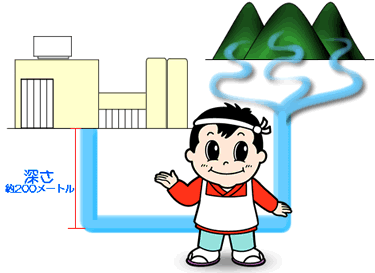
-
Hello! Welcome to the Nishiyama ramen factory tour! My name is Mensuke and I will be your guide. First of all just 200 meters under Nishiyama Seimen's factory, there is crystal water coming from near mountains. The factory is making ramen by using this water. A good amount of fresh water is required to make a delicious ramen. The amount of water we use each day is about the same as the amount of water used by 100 houses.
-
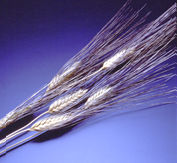
-
Everybody knows that ramen is made from wheat. The flour made from wheat is one of the major ingredients. Well, let's look closer to the secret of flour.
-
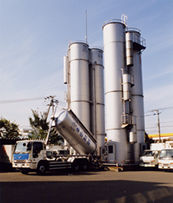
-
A big truck carries “flour" and put the powder in big tanks for storage. There are a total of 4 tanks, each containing 20 tons of flour. The height of the tank is 15 meters
Mixing
-
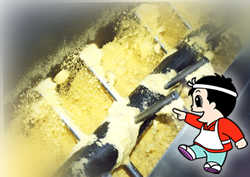
-
This is inside a machine that mixes flour, egg white flour and nerimizu water. A stick turns around, mixes the ingredients, and kneads.
-
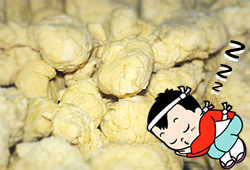
-
A well-kneaded material is called a noodle mass. When made, let it rest for a while.
Straightening
-
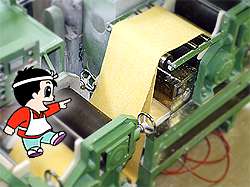
-
After maturation, the noodle masses are flattened through several rollers. Because they look like strip we call them ramen strip.
-
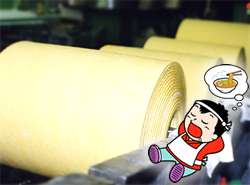
-
After this operation they will take again a nap so this maturation length process is repeated in order to give an extraordinary taste to the final product.
Cutting
-

-
At the end of the second maturation the noodle strip is being cut with a machine. Let`s take a look closer.
-
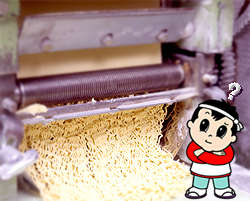
-
The thinly stretched noodle strip is put from the above the machine. Can you see how many teeth are inside it? Thanks to it, while cutting, noodles became wavy. Interesting, right?
Packaging
-
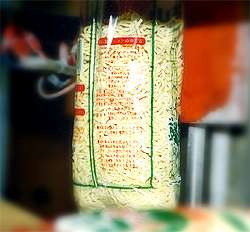
-
The ramen that has been cut is measured (in amount) and put inside a plastic pack.
-
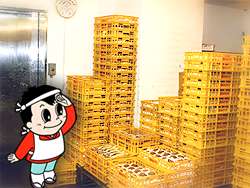
-
Then it can be packed in a plastic or wooden box and stored in a large refrigerator. Let's go a little further and let's look at the secret of tare sauce that cannot be ignored when speaking about ramen.
Shipment
-
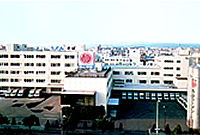
-
Finally shipping! The noodles taken from the refrigerator are now packed in a truck with a refrigerator and can leave the factory. Next destination is supermarkets, business stores and schools.
supermarkets, retail shop, schools
-

-
Arriving at the supermarket. I cannot wait to see noodles well displayed inside a store.
-
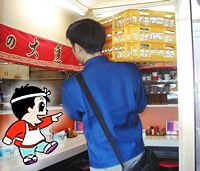
-
Arriving at a ramen restaurant! With our ramen noodles the cooks change the toppings and sauce to create their own tasty bowl.
-

-
Arriving at school The ramen of the lunch menu which everyone eats in Sapporo schools is also made at this factory. Have you ever seen this box?
The first half of ramen making explanation ends here.
Working people
-
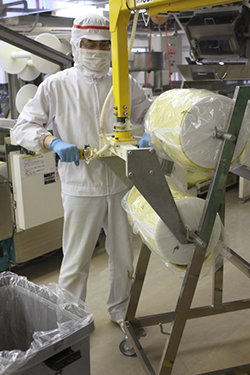
-
Let's take a closer look to the people working at the ramen factory.
They wear a white mask, white clothes and shoes and a white hat. People who work at food factories are indeed very concerned about hygiene.
-
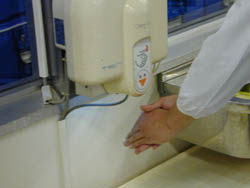
-
When work starts, it`s important to wash always hands and disinfect them.
-

-
They check the condition of the raw materials and always looking at the machines they are devoted to make ramen carefully.
From where do the raw materials come?
-

-
There are four large tanks at the entrance of the ramen factory. Each of them contains flour which is the raw material for ramen. Their height is almost 15 meters.
-

-
Wheat, which has been shipped from distant countries, is turned into flour in Otaru and Sapporo, and is send to ramen factories in trucks.
Ramen laboratory
-
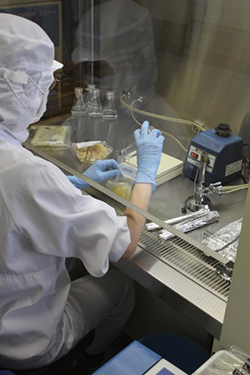
-
Inside the factory there is a special place called "research room" where there are many bottles stored. What kind of work is done in this space? Here are developed new flavors and created new effects. In addition, since ramen is a raw of product, daily inspections are done as well.
Avoiding to waste water and pollute the environment
-

-
We do not use too much water to keep the environment clean. It seems that a lot of water is used to make ramen. In the factory, we use a lot of water to boil ramen and to clean the machines. The amount of water used a day at the ramen factory is about the same as the water used in 100 houses.
-

-
For this reason, we use underground water instead of tap water. The water used at the factory is then cleaned properly in a septic tank and then drained into clean water. In the image at left you can see the solid component of dirt separated from the water. In this way, Nishiyama Seimen's ramen factory is making ramen while keeping clean the environment.
Shipping ramen to foreign countries
-
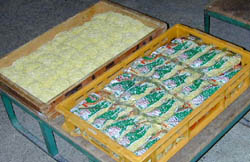
-
The ramen made in the factory is divided between different destinations and packed in a large refrigerator. Those boxed are directly delivered to a ramen specialty store.
-
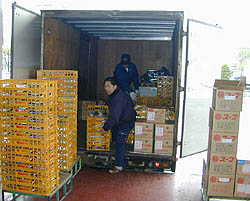
-
he plastic bags on the right are delivered to supermarkets and retailers and are carefully put inside a truck. This truck has a refrigerated container with 8 degree temperature.
-
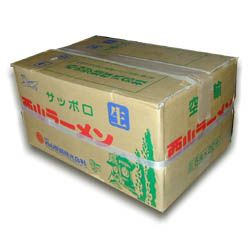
-
Ramen is shipped not only to Sapporo City but also to each part of Hokkaido, Tokyo and Kyushu. Then, in recent years, ramen has been frozen and transported abroad.
-
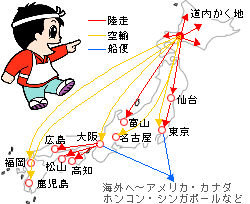
-
Then, in recent years, ramen has been frozen and transported abroad.
The second half of ramen making explanation ends here.
See the first half of making ramen
See everyone's questions
